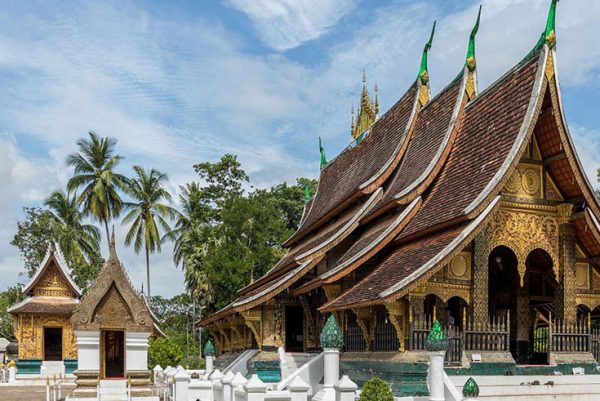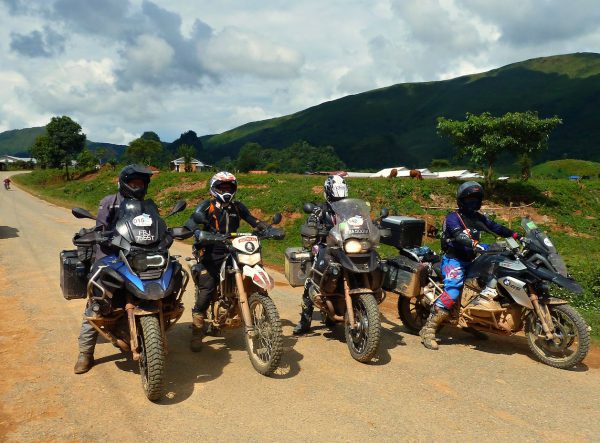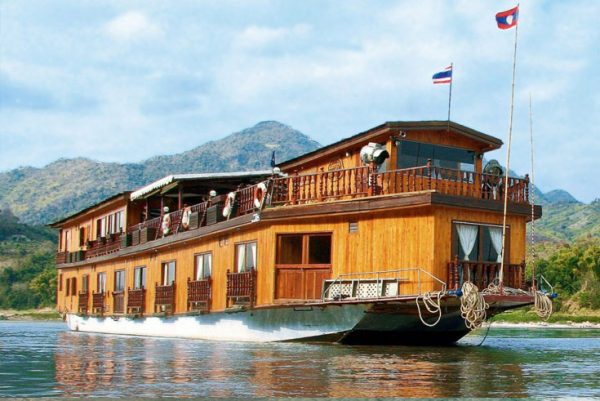Luang Prabang is considered as the best preserved city in Southeast Asia with hundreds of temples adorned with golden stupas and charming French colonial villas built in 19th and 20th centuries.
When is the best time to visit Luang Prabang?
The best time to visit Luang Prabang is from November to March because of dry weather with pleasant average temperatures.
How to come Luang Prabang?
By Flight: There are available flights from cities in Southeast Asia and the capital Vientiane for visitors.
By Bus: Besides domestic or international flights, visitors can come Luang Prabang by bus.
By Waterways: One of the nicest and most popular ways to get to Luang Prabang is to cross the border at Chiang Khong in Thailand to Huay Xai and take a boat up or down the Mekong through spectacular and scenic countryside. If you take the slow boat (recommended) then it will take 2 days, with an overnight in the small town of Pakbeng, a village with basic accommodations, before arriving in Luang Prabang on the afternoon of the next day (assuming no engine trouble or other delays).
What to see and do in Luang Prabang?
Phousi Hill or Phousi Mountain is a small in the center of Luang Prabang, located on the peninsula between the Mekong and Nam Khan Rivers. Phousi Hill with the height of 100 meters means “sacred hill” with the golden stupa on the top. Climbing to the top, it is worth the effort. From the top you will have great 360 degree views of Luang Prabang, the Mekong and Nam Khan rivers and the forested mountains.
Wat Xieng Thong or the temple of the Golden City is one of the largest temples in Luang Prabang. A symbol of great historic importance, its structure is typical for 16th-century Lao architecture with mosaic patterns, wall carvings, rare Buddhist deities, and a 12-metre-tall funeral carriage. The temple still remains its original form, besides the repaired roof, added gold leaf gilding and lacquering to the wals and entrance. It has become an important gathering place for significant annual festivals in Luang Prabang.
Royal Palace is built between 1904 and 1909 during the time of French colonial occupation as the residence of the Laos Royal Family. The Royal Palace situated on the banks of the Mekong River, faces the sacred Mount Phousi. After Lao monarchy was abandoned in 1975s, the Royal Palace was turned into the National Museum. Coming here you can see the Phra Bang, the country’s most sacred Buddha image, which is kept in a richly ornamented shrine.
The Wat Wisunalat is Luang Prabang’s oldest temple, it is also called Wat Visoun or Wat Visounarat, founded in 1512. The temple owns an important collection of ancient Buddha images. On the grounds are a sim of fairly plain architecture and the That Pathum, a large Singhalese style stupa. The temple burned down in 1887 when Luang Prabang was largely destroyed and looted by the Black Flag Army, a militia group from China. It was rebuilt in 1898.


















